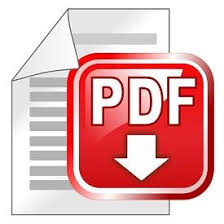Location:
PMKI > Stakeholder
Management > Stakeholder Circle® Methodology-
Monitor and Manage.


- Stakeholder Circle®
Methodology Overview
- Stakeholder Monitoring &
Managing
- Articles & Papers - Stakeholder
Monitoring & Managing
Other related sections of the PMKI:
- Advanced Stakeholder
Engagement
- The Stakeholder Relationship
Management Maturity Model (SRMM®).
 The
Stakeholder Work Sheet (SWS) is a sophisticated Excel
spreadsheet built to implement the Stakeholder Circle®
methodology - see
more on the SWS.
The
Stakeholder Work Sheet (SWS) is a sophisticated Excel
spreadsheet built to implement the Stakeholder Circle®
methodology - see
more on the SWS.
The fifth stage is monitoring the stakeholder community to assess the effectiveness of the engagement effort on the business unit's, or project’s, stakeholders. This requires the assessments previously made in stages one through four to be revisited at regular (or planned) intervals. The team also need to be proactive in managing issues and opportunities as they arise to maintain an effective working relationship with their stakeholder community.
A project’s stakeholder community is dynamic
However, whilst some stakeholders change, others may remain constant. The challenge facing every activity team is to determine the right stakeholders to engage at the right time during the activity’s lifecycle. This requires a regular review of the project’s stakeholder community, at key change points in the project and/or at regular intervals; ideally at a maximum interval of three months.
The Stakeholder Circle has been designed to facilitate the routine assessment of a project’s stakeholder community and to allow changes to be tracked over time. To be most effective, the membership of the team undertaking each assessment should not vary (thus minimizing the influence of any one person’s view).
Through the regular review and re-assessment of a project’s stakeholder community, a history of stakeholder involvement and supportiveness, and decisions made about their engagement, is maintained. As a consequence, the effectiveness of the on-going engagement strategy and communication plan can be assessed and improvements planned. Without this regular review, the effectiveness of the communication plan will inevitably diminish over time.
Through the review and re-assessment of a project’s stakeholder community, a history of each stakeholder's involvement and importance, and decisions made about their engagement is maintained, providing a means to monitor the effectiveness of engagement strategy and communications over time. This is achieved by mapping changes in the levels of support and receptiveness of each stakeholder, and calculating the Engagement Index to show the overall level of supportivness of the full community after each review.
The effectiveness of the engagement (communication) process can be measured over time by comparing the current Engagement Index with earlier versions:
 Stakeholder
Relationship Management A Maturity Model for
Organisational Implementation. Dr.
Lynda Bourne: This book provides the 'road map'
needed to help organizations achieve effective stakeholder
engagement in two ways. Firstly, it is a ‘how-to’ book,
secondly, it is a guidebook for assessing the current
maturity of an organization. See
more
Stakeholder
Relationship Management A Maturity Model for
Organisational Implementation. Dr.
Lynda Bourne: This book provides the 'road map'
needed to help organizations achieve effective stakeholder
engagement in two ways. Firstly, it is a ‘how-to’ book,
secondly, it is a guidebook for assessing the current
maturity of an organization. See
more
WP: The Stakeholder Cycle. The effective management of a project’s stakeholders involves a continuous process of analysis and review for effective stakeholder engagement.
Art: Stakeholder Management from the perspective of Sun Tzu. The supremacy of strategy over tactics, and tactics over reaction, in crafting effective stakeholder relationships.
PP: The Knowledge Management / Relationship Cycle. The Knowledge Management Relationship Cycle describes reciprocity between the data, information and knowledge that is exchanged for the business benefit of the organization between the project and its stakeholders. It charts the strong connections between the organization's KM and the actions of the project Stakeholders in contributing to project success. Click through for more on knowledge management.
PP: Beyond Conventional Stakeholder Management. The lack of effective engagement with stakeholders is a well acknowledged cause of program failure and stakeholder management is increasingly, as such, recognized as an important discipline. There are many tools and techniques already available (including the Stakeholder Circle) but to be effective, they need to be supported by the right attitudes. This paper describes PRIME Intelligence© and discusses how programs can develop PRIME Intelligence to enthuse a successful attitude across a program team. PRIME Intelligence© has been developed by Moorhouse Consulting Ltd. (UK) to help organizations improve their project and program outcomes and focuses on the 'right brain' attributes needed for successful stakeholder engagement.